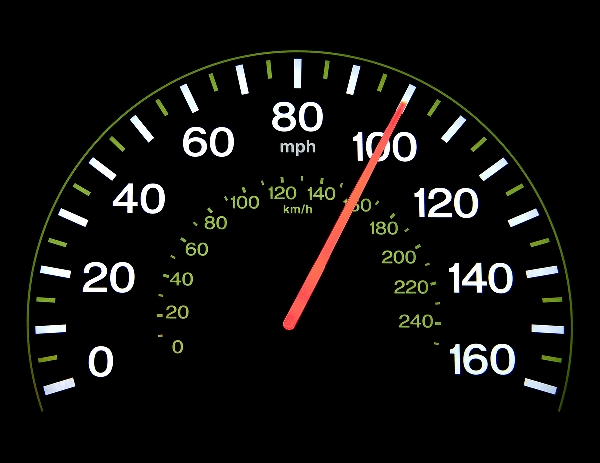 Speed is involved in about one out of three fatal crashes. It is the third leading contributing factor to traffic crashes. But while injuries and fatalities due to other dangerous behaviors, such as driving while impaired and not wearing seatbelts, have been significantly reduced, speeding is still a challenge.
Speed is involved in about one out of three fatal crashes. It is the third leading contributing factor to traffic crashes. But while injuries and fatalities due to other dangerous behaviors, such as driving while impaired and not wearing seatbelts, have been significantly reduced, speeding is still a challenge.
Author: Randy
Heart Disease Risk Factors You Can Control
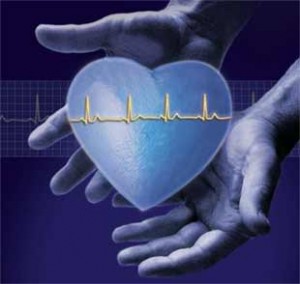 High cholesterol and high blood pressure are major risk factors for heart disease. Being overweight, obese, or physically inactive all increase your risk. So does diabetes, especially if your glucose levels are not well controlled. Discuss your risks with your doctor and develop a strategy for managing them. There are many steps you can take to protect your heart.
High cholesterol and high blood pressure are major risk factors for heart disease. Being overweight, obese, or physically inactive all increase your risk. So does diabetes, especially if your glucose levels are not well controlled. Discuss your risks with your doctor and develop a strategy for managing them. There are many steps you can take to protect your heart.
via Heart Disease Pictures Slideshow: A Visual Guide to Heart Disease on MedicineNet.com.
Protect Kids as They Head Back to School
 As the school year gets underway, it’s great to see more kids walking to – and from – school. We want to remind parents and drivers to do their part to keep these kids safe. One fun idea is walking the route to school with your child to find the best places to cross the street or discuss the importance of making eye contact with drivers before you step into the road.
As the school year gets underway, it’s great to see more kids walking to – and from – school. We want to remind parents and drivers to do their part to keep these kids safe. One fun idea is walking the route to school with your child to find the best places to cross the street or discuss the importance of making eye contact with drivers before you step into the road.
Here are a few other tips that will help keep everyone safe.
Tips for Walkers
- Developmentally, most kids can’t judge speeds and distances until at least age 10, so younger kids need to cross with an adult
- Did you know most walking injuries happen mid-block or someplace other than intersections? Whenever possible, cross the street at corners, using traffic signals and crosswalks
- Look left, right and left again before crossing the street, and keep looking and listening while crossing
- Walk, don’t run, when crossing the street
- It’s always best to walk on sidewalks or paths, but if there are no sidewalks, walk facing traffic as far to the left as possible
- Remove headphones when crossing the street
- If you need to use your phone, stop walking
- Distraction among drivers is at an all-time high today, so try to make eye contact with the driver before you step into the road
Tips For Drivers
- Slow down and be especially alert in residential neighborhoods and school zones, before and after school hours
- Most walkers are injured mid-block, not at intersections, so watch out for kids who may dart into traffic or cross where they shouldn’t
- Give pedestrians the right of way at a crosswalk
- Using cell phones, even hands-free, makes it harder for drivers to be alert to walkers who may also be distracted on cell phones.
What is the National Registry of Certified Medical Examiners (National Registry)?
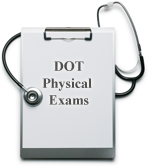 The National Registry of Certified Medical Examiners (National Registry) is a Federal program that establishes requirements for healthcare professionals who perform physical qualification examinations for truck and bus drivers. To become a certified medical examiner (ME) and be listed on the National Registry, healthcare professionals must complete training and testing on the Federal Motor Carrier Safety Administration’s (FMCSA) physical qualifications standards and guidelines. The National Registry website is accessible to carriers, drivers, enforcement officials, and the general public.
The National Registry of Certified Medical Examiners (National Registry) is a Federal program that establishes requirements for healthcare professionals who perform physical qualification examinations for truck and bus drivers. To become a certified medical examiner (ME) and be listed on the National Registry, healthcare professionals must complete training and testing on the Federal Motor Carrier Safety Administration’s (FMCSA) physical qualifications standards and guidelines. The National Registry website is accessible to carriers, drivers, enforcement officials, and the general public.
All healthcare professionals whose scope of practice authorizes them to perform physical examinations, as defined by the State in which they practice,and who intend to perform physical examinations and issue medical certificates for commercial motor vehicle (CMV) drivers to meet the requirements of Section 391.41 of the Federal Motor Carrier Safety Regulations (FMCSRs) must be certified and listed on FMCSA’s National Registry by May 21, 2014.
Famous Tobacco Victims – George Harrison
What Is Total Worker Health?
![]() Total Worker Health™ is a strategy integrating occupational safety and health protection with health promotion to prevent worker injury and illness and to advance health and well-being.
Total Worker Health™ is a strategy integrating occupational safety and health protection with health promotion to prevent worker injury and illness and to advance health and well-being.
The protection, preservation, and improvement of the health and well-being of all people who work are goals shared by workers, their families, and employers. Today, more than ever, there is increasing evidence that the work environment and the overall health, safety and well-being of the workers within it are strongly connected. Diminished health and injury, whether caused by work or resulting from non-work activities, reduces quality of life, opportunity, and income for workers and those dependent upon them. Conversely, workplaces with low risk of injury and enhanced opportunities for the total health of workers can lead to a vibrant, engaged and highly performing workforce.
via CDC – Total Worker Health What Is Total Worker Health? – NIOSH Workplace Safety and Health Program.
Protect Yourself From Violent Crime
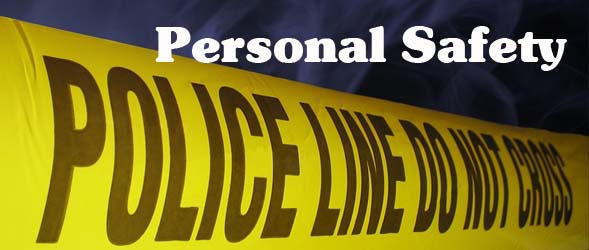 A list of tips for adults on staying safe:
A list of tips for adults on staying safe:
- Don’t walk or jog early in the morning or late at night when the streets are deserted.
- When out at night, try to have a friend walk with you.
- Carry only the money you’ll need on a particular day.
- Don’t display your cash or any other inviting targets such as pagers, cell phones, hand-held electronic games, or expensive jewelry and clothing.
- If you think someone is following you, switch directions or cross the street. If the person continues to follow you, move quickly toward an open store or restaurant or a lighted house. Don’t be afraid to yell for help.
- Try to park in well-lighted areas with good visibility and close to walkways, stores, and people.
- Make sure you have your key out as you approach your door.
- Always lock your car, even if it’s in your own driveway; never leave your motor running.
- Do everything you can to keep a stranger from getting into your car or to keep a stranger from forcing you into his or her car.
- If a dating partner has abused you, do not meet him or her alone. Do not let him or her in your home or car when you are alone.
- If you are a battered spouse, call the police or sheriff immediately. Assault is a crime, whether committed by a stranger or your spouse or any other family member. If you believe that you and your children are in danger, call a crisis hotline or a health center (the police can also make a referral) and leave immediately.
- If someone tries to rob you, give up your property—don’t give up your life.
- If you are robbed or assaulted, report the crime to the police. Try to describe the attacker accurately. Your actions can help prevent someone else from becoming a victim.
via Protect Yourself From Violent Crime — National Crime Prevention Council.
World’s oldest woman celebrates her sweet 116th birthday
 Besse Cooper celebrates her 116th birthday in Monroe, Ga., on Aug. 26, 2012.
Besse Cooper celebrates her 116th birthday in Monroe, Ga., on Aug. 26, 2012.
Her secrets? “I mind my own business. And I don’t eat junk food.”
via World’s oldest woman celebrates her sweet 116th birthday – Good News – TODAY.com.
Common Hazards Found at Work
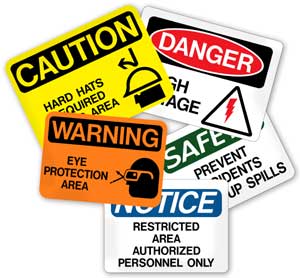 You’d be surprised how many common hazards can be found in workplaces.
You’d be surprised how many common hazards can be found in workplaces.
- Slips and trips: Anything lying around on the floor can cause a tripping hazard. Slips and trips can result in injuries such as strains or fractures.
- Lifting: Lifting heavy items alone, or lifting items incorrectly, can cause serious and long-term back injury
- Electricity: Electricity can kill in an instant. Always follow safety instructions on equipment.
- Moving machinery: Make sure you stay behind barriers and avoid loose clothing which can get tangled in moving parts.
- Fire: Depending on the environment, fire can take hold in minutes or seconds. Not only can it cause burns, but serious damage from smoke inhalation.
- Working at heights: Falling from any height can result in serious injury and even death.
Heart Attack Symptoms and Early Warning Signs
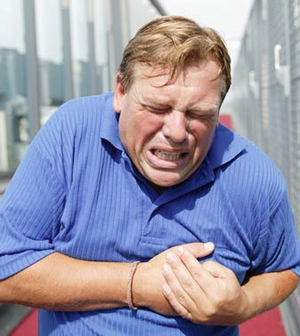 Knowing the early warning signs of heart attack is critical for prompt recognition and treatment. Many heart attacks start slowly, unlike the dramatic portrayal often seen in the movies. A person experiencing a heart attack may not even be sure of what is happening. Heart attack symptoms vary among individuals, and even a person who has had a previous heart attack may have different symptoms in a subsequent heart attack. Although chest pain or pressure is the most common symptom of a heart attack, heart attack victims may experience a diversity of symptoms that include:
Knowing the early warning signs of heart attack is critical for prompt recognition and treatment. Many heart attacks start slowly, unlike the dramatic portrayal often seen in the movies. A person experiencing a heart attack may not even be sure of what is happening. Heart attack symptoms vary among individuals, and even a person who has had a previous heart attack may have different symptoms in a subsequent heart attack. Although chest pain or pressure is the most common symptom of a heart attack, heart attack victims may experience a diversity of symptoms that include:
- pain, fullness, and/or squeezing sensation of the chest;
- jaw pain, toothache, headache;
- shortness of breath;
- nausea, vomiting, and/or general epigastric (upper middle abdomen) discomfort;
- sweating;
- heartburn and/or indigestion;
- arm pain (more commonly the left arm, but may be either arm);
- upper back pain;
- general malaise (vague feeling of illness); and
- no symptoms (approximately one quarter of all heart attacks are silent, without chest pain or new symptoms and silent heart attacks are especially common among patients with diabetes mellitus).
via Heart Attack Symptoms and Early Warning Signs – MedicineNet.

